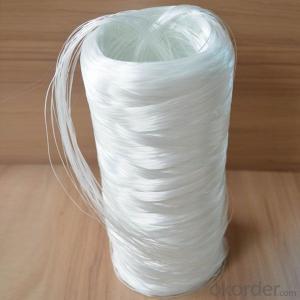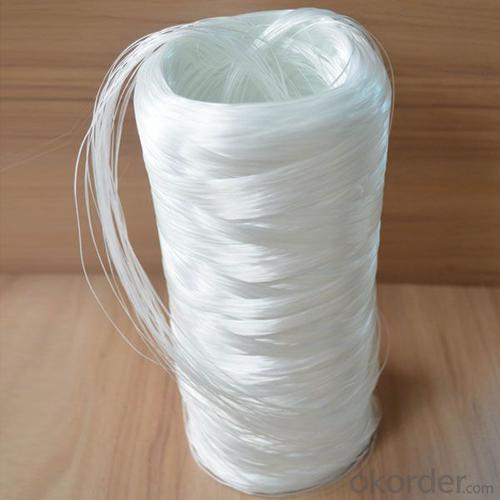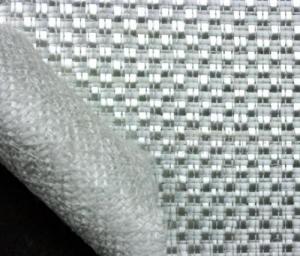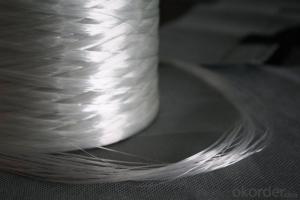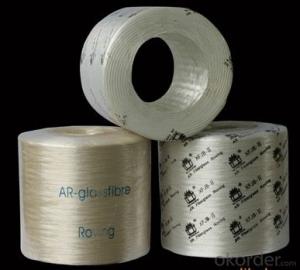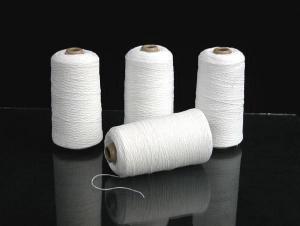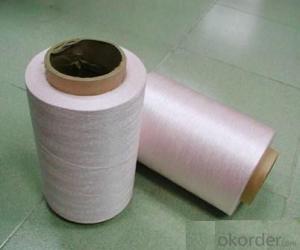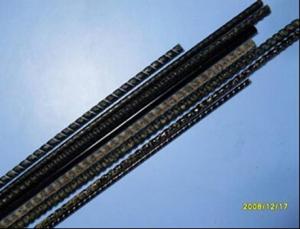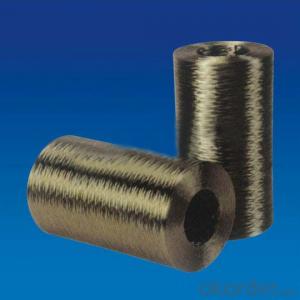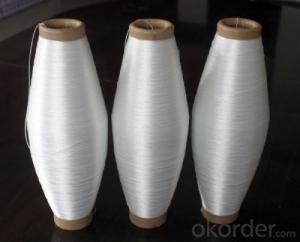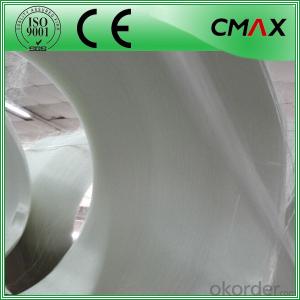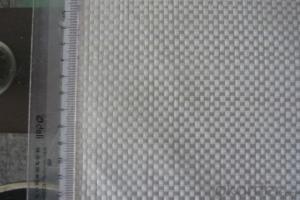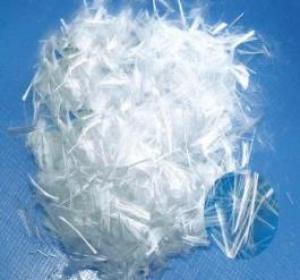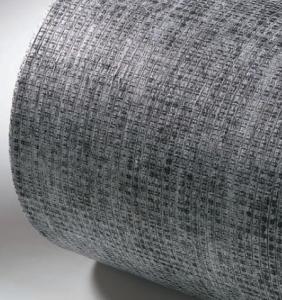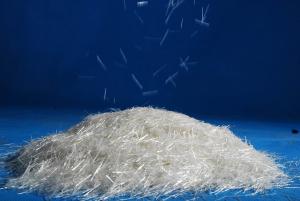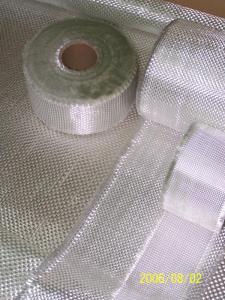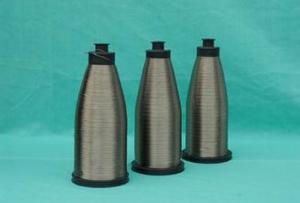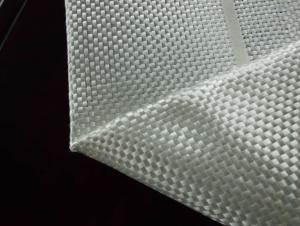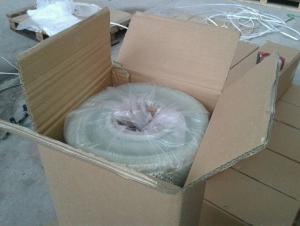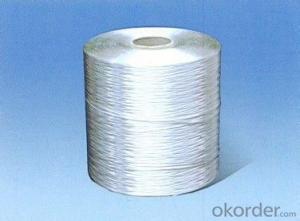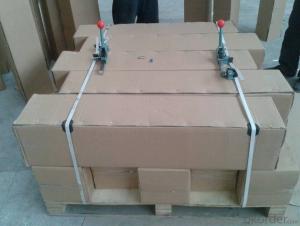High Strength High Quality Fiberglass Roving for Gypsum
- Loading Port:
- Shanghai
- Payment Terms:
- TT OR LC
- Min Order Qty:
- 10 m.t.
- Supply Capability:
- 100 m.t./month
OKorder Service Pledge
OKorder Financial Service
You Might Also Like
This gypsum roving is processed by silane resin, especially used in fiberglassreinforced gypsum products.
Characteristics :
Good choppability, easy dispersion, no static
Higher strength, fire resistance, sound insulation and lighter in weight
Good hardness, good beaming
Application:
※Widely used in building construction and decoration areas.
※Gypsum plate, decorative material, sculpture
※Fire resistance material and other decoration materials, such as suspended ceiling clapboard and deadening, etc
※Gypsum ceiling
Package:Standard 20kg/roll
Weave bags or cartons
- Q: What are the main molding processing methods of plastics
- There are many methods of plastic forming. Six main forming methods are listed below: 1 injection molding and injection molding, extrusion molding. 2. extrusion molding, which is the main molding of thermoplastic plastic molding, 3 hollow blow molding, also known as the 4 compression molding also called compression molding. The upper and lower mold installation the template in the press on, the plastic material directly into the cavity, the mold is closed, full of plastic cavity in the heat and pressure, setting after plastic products. 5, injection molding and transfer molding. One of the main forming method is thermosetting plastics. It is feeding room, plastic pellets into mould in the heating, melting plastic under pressure through the pouring system of bottom mold transfer chamber fills the cavity, and then cure it. 6, solid molding molding plastics in melting temperature, in the molding process No obvious flow condition, for two times molding plastic sheet, such as vacuum molding, compression molding and air pressure molding, original for thin-walled parts molding, first used in the manufacture of thick wall parts. 7, other molding calendering, there are many casting plastic molding methods...
- Q: Situation of nonwoven materials.
- A fiber as main ingredient in nonwoven adhesive bonded materials. Needle punched nonwoven materials, Spunlaced Nonwovens Materials, spunlaid nonwovens method, fiber mesh constitute the main body of nonwoven materials, fiber in Nonwovens in these accounted for more than half or even one hundred percent. Fiber as a component of nonwovens fiber tangles in acupuncture Nonwovens Materials, Spunlaced Nonwovens Material and no yarn stitch bonding nonwoven material, part of fiber like buddle structure and coil web fibers to reinforce the fiber web. Three, fiber as the adhesive components of Nonwovens in most thermal bonded nonwovens, hot melt fiber into web in thermal bonding when all or part of melting, forming a hot melt adhesive composition in Web reinforcement.
- Q: What parameters should be provided for the customs clearance of the glass fiber?
- 1 name 2 material (fiberglass) 3 types (sliver, roving , yarn, short fiber) 4 length
- Q: What type of cement is used in the common GRC component?
- Fiber: You can selectively add some of the volcanic ash active material: High efficiency water reducing agent can be selectively added to the water: The basic composition of GRC material is cement: when the product contains steel reinforcement or steel embedded parts of.5%, the low alkalinity sulphoaluminate cement. The acrylate copolymer emulsion, antirust agent and other additives, fiber and water and other additives to improve the performance of the materials later. European and American countries require the use of GRC in the glass fiber zirconia content should be not less than 16, antifreeze, early strength agent, retarder, white Portland cement. . Additive is conducive to improve the integrated performance of GRC products, including the alkali resistant glass fiber twistless roving. Polymer. Other materials: Usually the added polymer is emulsion C, and alkali resistant glass fiber mesh. The fibre in the GRC material must be of alkali resistant glass fiber: Usually the cement used in GRC material are mainly rapid hardening sulphoaluminate cement and Portland cement. Cement. More details to be continued. GRC material is made of sand, alkali resistant glass fiber chopped yarn. It is durability and shall not use calcium chloride additives. . , for example, strength, anti permeability,
- Q: What can be produced by waste flat glass.
- 1, It can used for producing asbestos cut strand. 2, It can be used for producing twistless roving. 3; It also can pull into a wire for producing glass fiber cloth. It is widely used.
- Q: Method for repairing water leakage of toilet without knocking brick.
- 1 Buddha plastic mud: It can replace the glass glue, completely solve the problem of Water Leakage mildew in wall corner and window corner. Metal, glass, cement, stone, tile can completely bonded into a whole. The invisibal waterproof liquid (seam leakage NEMESIS): the international most advanced waterproof materials, colorless and tasteless water and looks exactly the same. A simple rinse two times to solve the tile surface and the joint leakage and the surface color has no effect. The permanent waterproof effect is not removed! Dig into a great magic Water Leakage governance bathroom waterproof material or other room downstairs home! 3 bathroom water leakage solution set is plastic mud invisible waterproof liquid (seam leakage NEMESIS) suit
- Q: Does glass wool belongs to glass fiber cloth?
- No, glass wool belongs to the one category of glass fiber and it is a kind of artificial inorganic fiber. Glass fiber cloth is twistless roving plain fabric made by glass fiber cloth.
- Q: Production process of glass fiber tube
- The tube is made in continuous movement of mandrel. It should be feed into steel mould fixed in bearing. After continuous filament winding and centrifugal casting process finishes,the number of pipe manufacturers using reciprocating fiber winding process is more than that of other two production technology. After the resin in products has been solidified, you should inject unsaturated resin with catalyst at the one side of steel mould. This process is that pipe passes through a feeding station whcih aims to supply resin presoak twistless roving. There are mainly three manufacturing techniques of glass fiber pipe. Reciprocating fiber winding technology (belonging to the fixed length method). The main material includes glass fiber reinforced materials and sand. Auxiliary angle (wingding angel) is controlled by the ratio of impregnating vessel movement speed and mandrel rotate speed. Pipe usually solidifies under high temperature. With the help of centrifugal force, its applicability is very good. Continuous filament winding process(belongs to continuous method). Impregnating vessel movement is controlled by computerization machine. With the number of the layers increases gradually, inner tube form a smooth plane due to the centrifugal force and mandrel gets out of glass?reinforced?plastics pipe. Centrifugal casting process (belonging to the fixed length method). Tube made in this way, is also known as glass fiber reinforced plastic sand pipe. Reciprocating filament winding process In this process
Send your message to us
High Strength High Quality Fiberglass Roving for Gypsum
- Loading Port:
- Shanghai
- Payment Terms:
- TT OR LC
- Min Order Qty:
- 10 m.t.
- Supply Capability:
- 100 m.t./month
OKorder Service Pledge
OKorder Financial Service
Similar products
Hot products
Hot Searches
Related keywords
